While there are many dishes that highlight the natural sweetness of sweet potatoes, if you are looking for something to pair with rice, Satsumaimo Gohan is the perfect choice. Lightly seasoned rice nicely complements the flavor of Japanese sweet potatoes.

Jump to:
What is Satsumaimo Gohan?
Satsumaimo Gohan is a dish made by cooking rice with chopped Japanese sweet potatoes. "Satsumaimo" means Japanese sweet potatoes, and "Gohan" refers to cooked rice. In this recipe, sake and salt are used to enhance the flavor of the dish. It is recommended to dice the sweet potatoes into smaller pieces so that they blend even better with the rice.
In Japan, there is a cultural tradition of cooking seasonal ingredients together with rice, and satsumaimo gohan is a popular dish enjoyed in the fall when sweet potatoes are in season. The natural flavor of sweet potatoes harmonizes well with rice, making it a delicious dish.

Exploring Japanese sweet potatoes
Japanese sweet potatoes mostly have yellow flesh and are known for their natural sweetness and dense texture. They are rich in potassium, calcium, vitamins, and dietary fiber, making them a well-balanced source of nutrition and often referred to as nearly complete nutritional food in Japan.
There are over 60 varieties, including Beni-Azuma (紅あずま), Naruto-Kintoki (鳴門金時), Anno-Imo (安納芋), and Beni-Haruka (紅はるか), each offering distinct sweetness and texture depending on the variety. You can use any type of Japanese sweet potato for this dish, so feel free to try the ones available in your area.
Cooking tools
The tool you need to make this dish is the same as the one used to cook regular Japanese rice: a pot or a rice cooker. In Japan, while most households have a rice cooker, it is less common outside of Japan, so I’m sharing a recipe using a pot here. Of course, you can also use a rice cooker; in that case, simply replace the pot with the rice cooker in the recipe.
To learn more about how to cook Japanese rice on the stove, please refer to the linked page.
Seasonal Japanese rice dishes
In Japan, there are many types of cooked rice dishes made with fresh, seasonal ingredients. One representative rice dish in fall is satsumaimo gohan, but there are also other seasonal varieties, such as mame gohan (green pea rice), corn rice, ginger rice, kuri gohan (chestnut rice), and kaki gohan (oyster rice), all prepared according to the season.
In traditional Japanese kaiseki restaurants, it is customary to serve a rice dish made with seasonal ingredients before dessert. If you have the opportunity to try kaiseki cuisine, pay attention to the ingredients used in the rice dishes. You will surely experience the essence of the season.

📋Step-by-step recipe
Ingredients
- 1 ½ cups Japanese short-grain rice (2 rice cooker cups for 4 servings)
- 1 ⅔ cups water
- 1 Japanese sweet potato (satsumaimo) (about 8.8 oz/250 g)
- ½ Tbsp sake
- 1 tsp salt
Instructions
🕒 Total: 1 hr 5 mins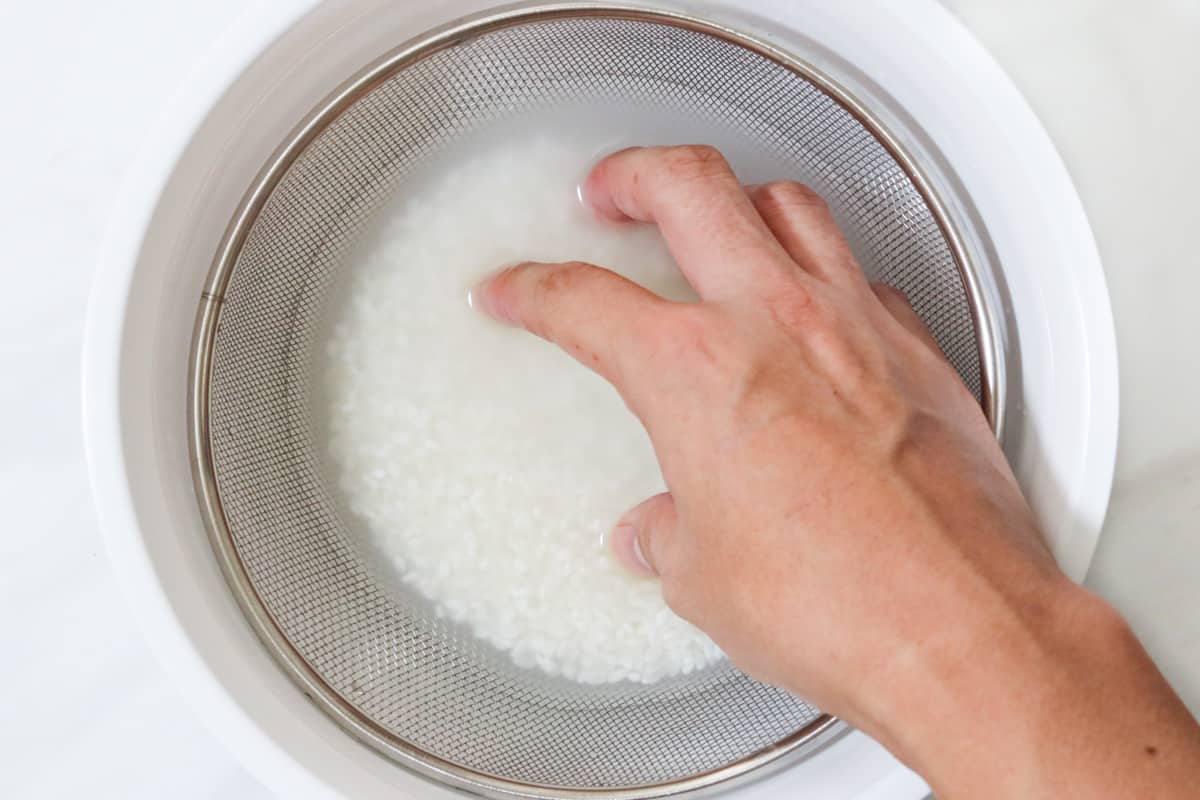
Step 1
Place a sieve over a bowl, add rice, and rinse it with water (not included in the recipe). Repeat this process several times, changing the water each time.
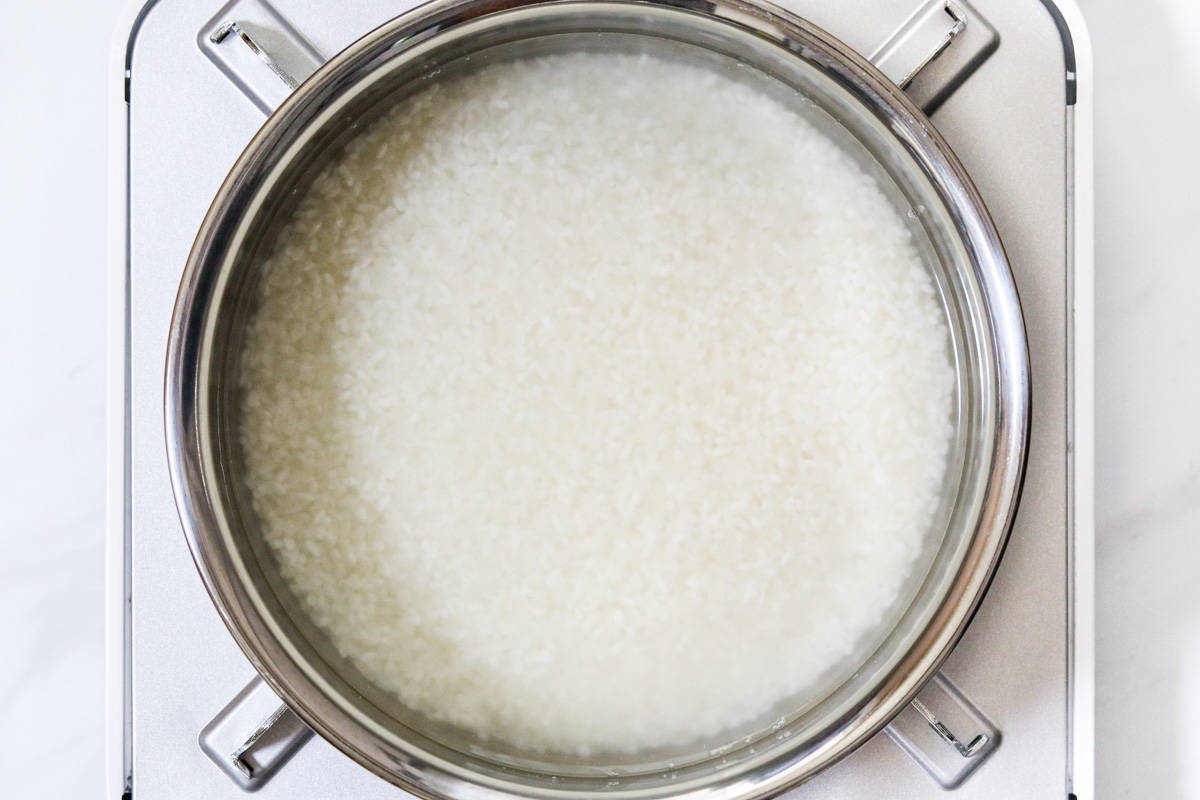
Step 2
Soak the rinsed rice in water (as specified in the recipe) in a pot for at least 30 minutes.
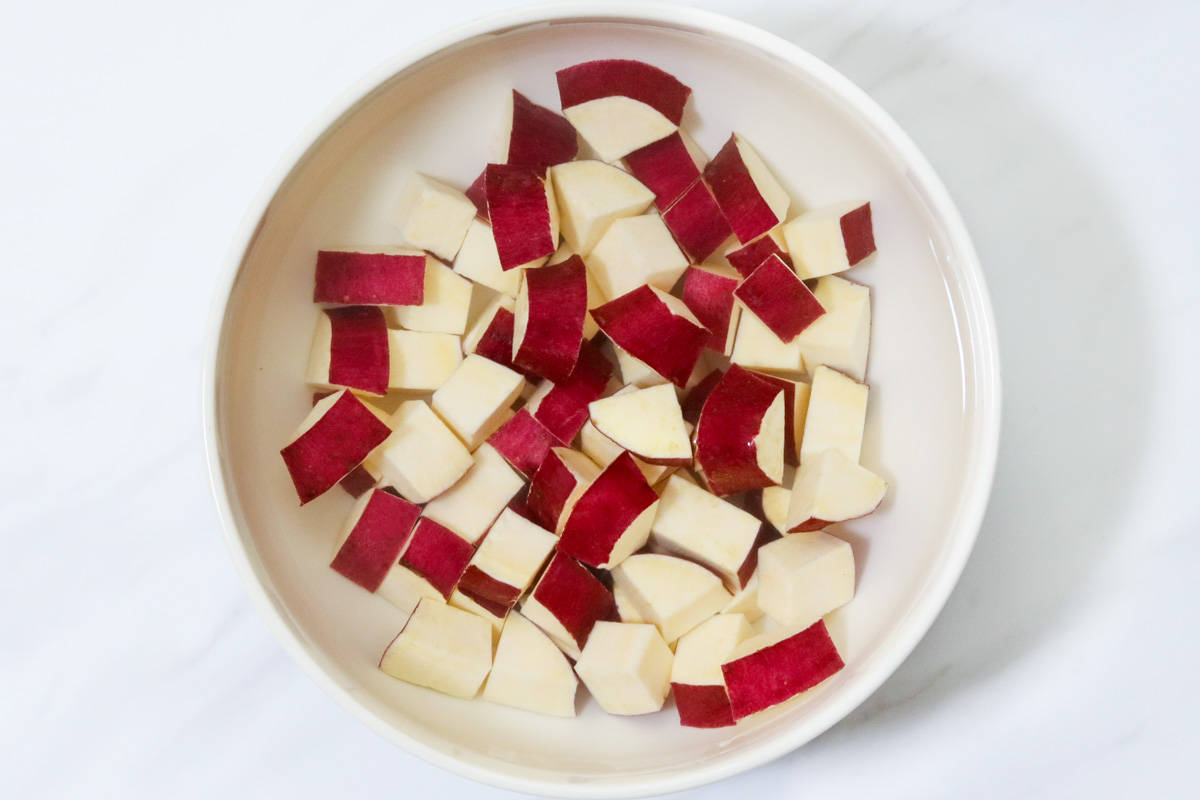
Step 3
Cut sweet potatoes into small cubes and soak them in water (not included in the recipe) for about 5 minutes to remove any astringency.
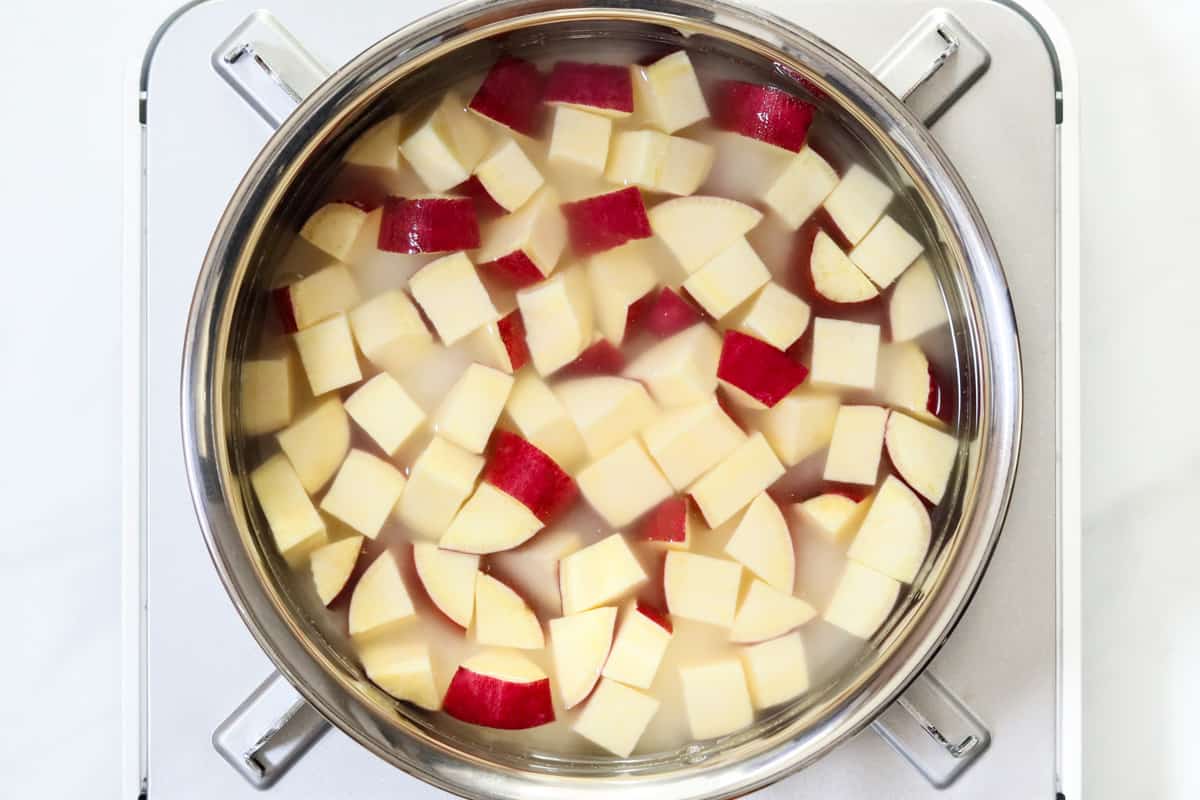
Step 4
Mix sake and salt in the pot. Evenly distribute the diced sweet potatoes over the rice.
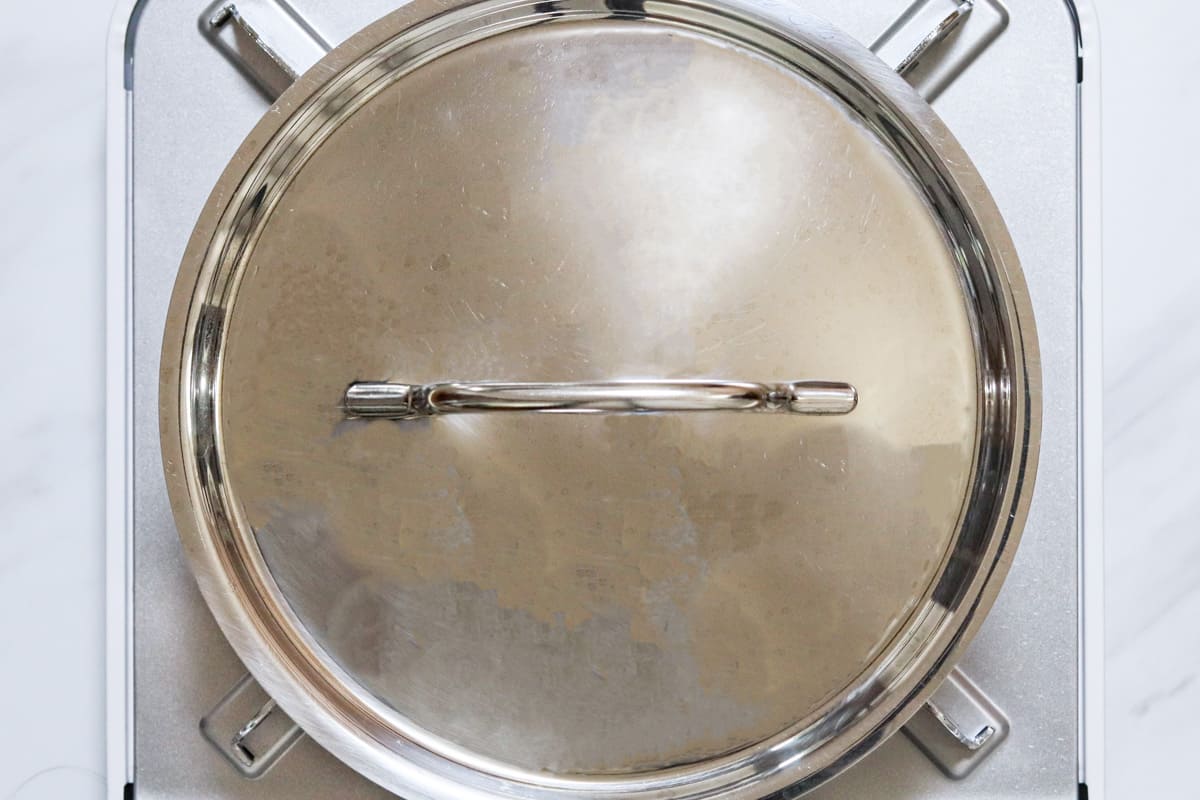
Step 5
Cover the pot and bring it to a boil. Once boiling, reduce the heat to low and continue cooking for 11 minutes (10 minutes for 2 servings, 12 minutes for 6 servings).
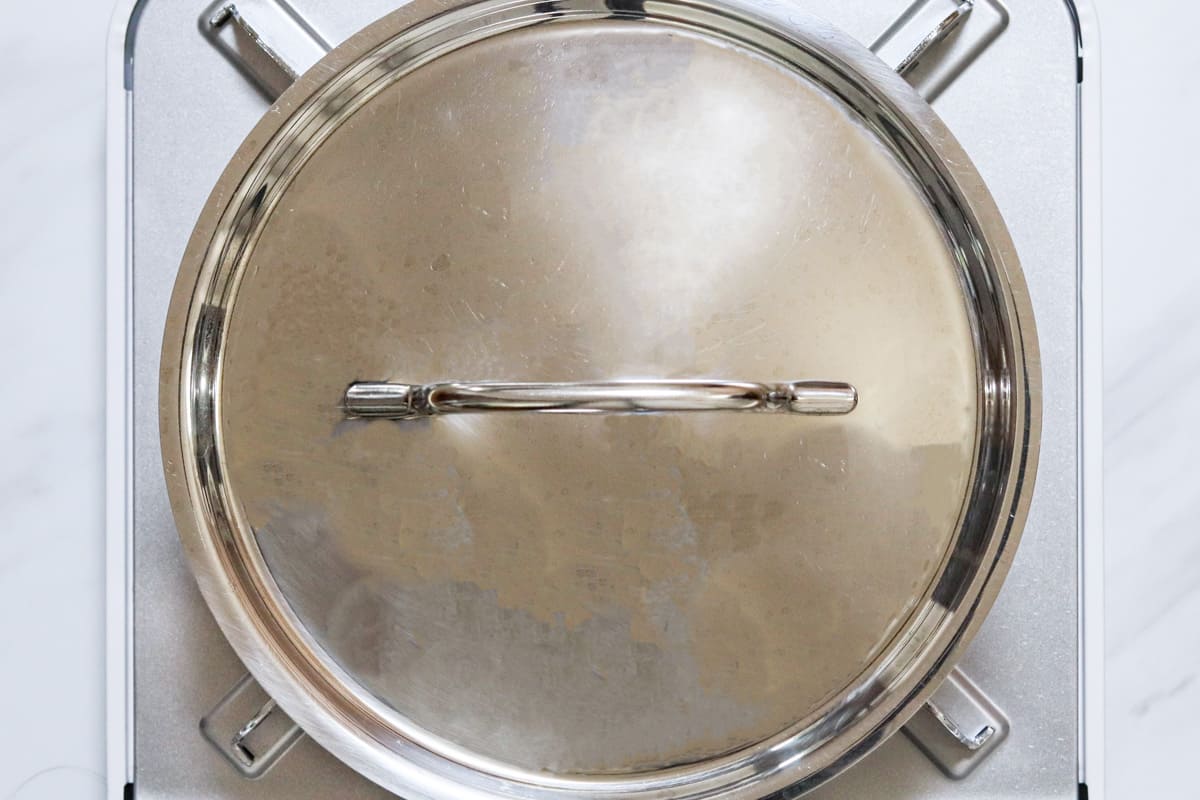
Step 6
Turn off the heat and let it steam for 10 minutes with the lid still on.
To store
You can store it in the refrigerator for up to 2 days.
If you try this recipe, I’d love to hear what you think. Please consider leaving a review and star rating in the comments below. If you enjoyed it, I’d really appreciate it if you shared it with your friends.
Recipe card

Satsumaimo Gohan (Japanese Sweet Potato Rice)
Ingredients
- 1 ½ cups Japanese short-grain rice (2 rice cooker cups for 4 servings)
- 1 ⅔ cups water
- 1 Japanese sweet potato (satsumaimo) (about 8.8 oz/250 g)
- ½ Tbsp sake
- 1 tsp salt
Instructions
- Place a sieve over a bowl, add rice, and rinse it with water (not included in the recipe). Repeat this process several times, changing the water each time.
- Soak the rinsed rice in water (as specified in the recipe) in a pot for at least 30 minutes.
- Cut sweet potatoes into small cubes and soak them in water (not included in the recipe) for about 5 minutes to remove any astringency.
- Mix sake and salt in the pot. Evenly distribute the diced sweet potatoes over the rice.
- Cover the pot and bring it to a boil. Once boiling, reduce the heat to low and continue cooking for 11 minutes (10 minutes for 2 servings, 12 minutes for 6 servings).
- Turn off the heat and let it steam for 10 minutes with the lid still on.
Notes
- You can store it in the refrigerator for up to 2 days.

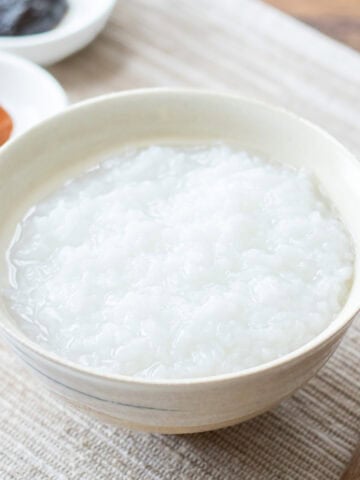



Leave a Rating and a Comment